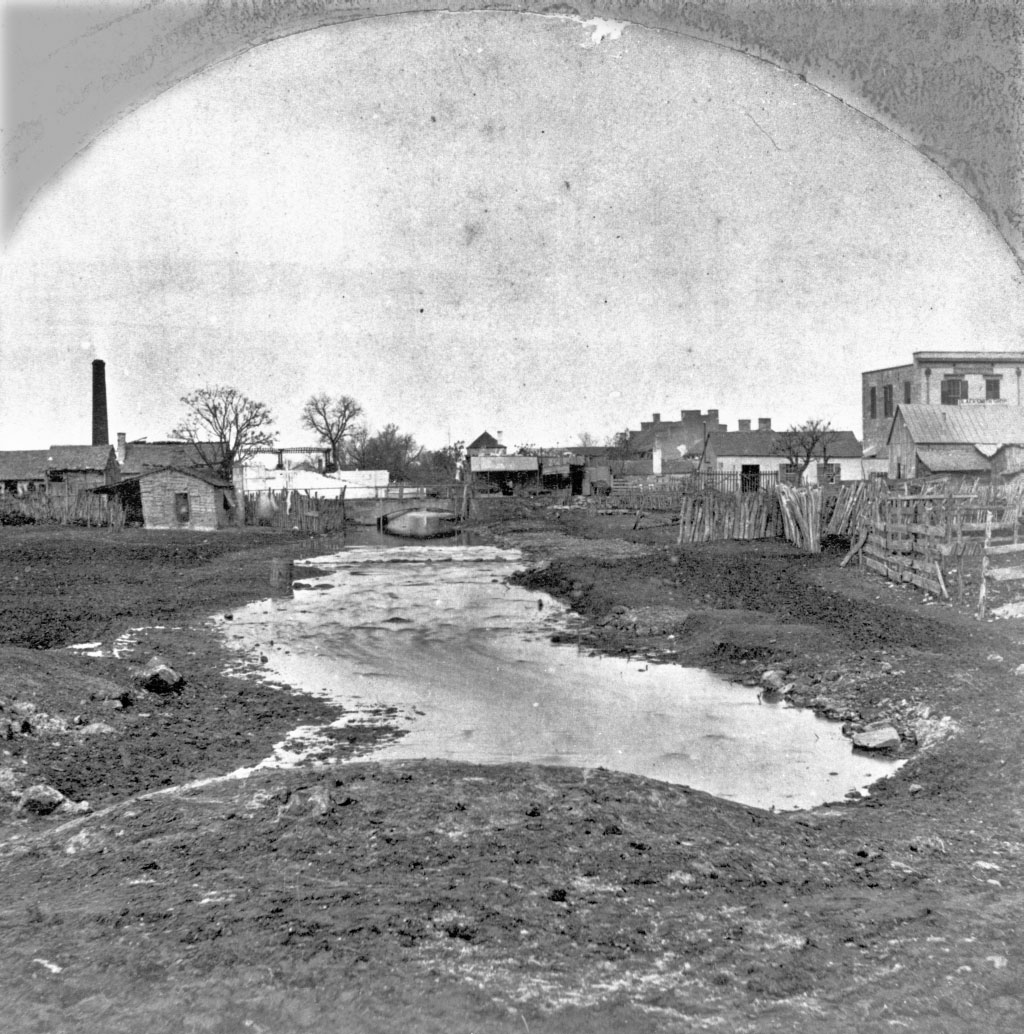In attempts to prevent the frequent occurrence of floods, the natural creek was almost engineered out of existence. The deadliest of these disasters took place in September of 1921. There was massive destruction in the downtown area and neighborhoods adjoining the river and the west side creeks—which included San Pedro Creek. The loss of life was horrifying; there were 51 people confirmed dead—and others missing. All but 4 of the deaths occurred along the creeks.
Consequently, a series of decisions were made by the city throughout the 1900s. The end result was that San Pedro Creek was still there—but it had been sent into hiding. It was no longer in plain sight, as it had been for centuries.
A timeline of events that directly impacted San Pedro Creek during the 1900s:
- Throughout the 1900s, the creek was modified as a result of increased flooding and construction of new rail lines and modern highways. The first major change took place in 1914, when the Missouri, Kansas & Texas Railroad (known as the M-K-T or the Katy) received approval to construct a passenger and freight terminal in the city.
- Construction of a rail yard and depot at Flores and Durango streets in 1917 required enclosing San Pedro Creek in an underground box culvert. It was called the Katy underpass. In the years following, citizens complained that it worsened upstream flooding.
- Because of the devastating floods in the late 1800s and early 1900s, the City Council passed an ordinance stipulating that San Pedro Creek be altered to a channel width of 60 feet between Myrtle and Travis streets. The channel was re-aligned at various points. Wood, stone, and concrete retaining walls were installed to reinforce the banks.
- Additional straightening and channelization work was completed in the 1930s. These were Depression-era relief projects funded by the city, county, state, and federal governments.
- Completion of the M-K-T rail yard, depot, and freight yard transformed properties along the creek. Warehouses and light manufacturing facilities connected to the main rail line by sidings.
- Beginning in 1945 following the end of World War II, the development of new suburbs and highways changed the face of San Antonio. Portions of the West Side Expressway were completed in 1947, while other more elevated segments were finished in the mid-1950s. The new highway spanned San Pedro Creek south of Alamo Street. Construction of another segment (the north-south expressway) required moving the creek bed and channeling the water through an open conduit that ran between the north- and south-bound lanes.
- Following another devastating flood in 1946, the United States Army Corps of Engineers and the San Antonio River Authority partnered to implement the San Antonio River Channel Improvement Project (SACIP). It focused on 31 miles of channel improvements that included San Pedro Creek.
- By the mid-1970s, work on the San Pedro Creek channel was largely completed. This included widening, deepening, and straightening the channel, landscaping some parts of it, and enclosing some areas in box culverts.
- By the late 1970s, few traces remained of the area’s early history. Buildings constructed on Urban Renewal parcels along the creek (like various apartment buildings, hotels, San Antonio Police Headquarters, and the Bexar County Jail) ignored their neighboring historic waterway.
- In 1982, the United States Army Corps of Engineers proposed the idea of deep underground tunnels to divert the overflow from both the San Antonio River and San Pedro Creek. The goal was to protect downtown property from flooding. The San Pedro Creek’s flood control tunnel was completed in 1991.
- Urban revitalization in the late 1900s and early 2000s continued to transform the cityscape adjoining the creek. Apartments, condominiums, hotels, office buildings were added or restored. The Union Stockyards and the M-K-T freight yard were closed and remained vacant; their historic era had passed.
And so, this chapter of San Pedro Creek’s story ended with a low, almost unheard cry. The natural beauty of the creek had been all but destroyed—or at least constrained and hidden. Everything that had once attracted so many historic individuals and events over the centuries seemed to be gone forever. The city had made necessary progress. However, San Pedro Creek had paid a high price for it.
But take heart! The creek’s story was not actually over. An idea for a new purpose for the creek was flowing and channeling strength.



